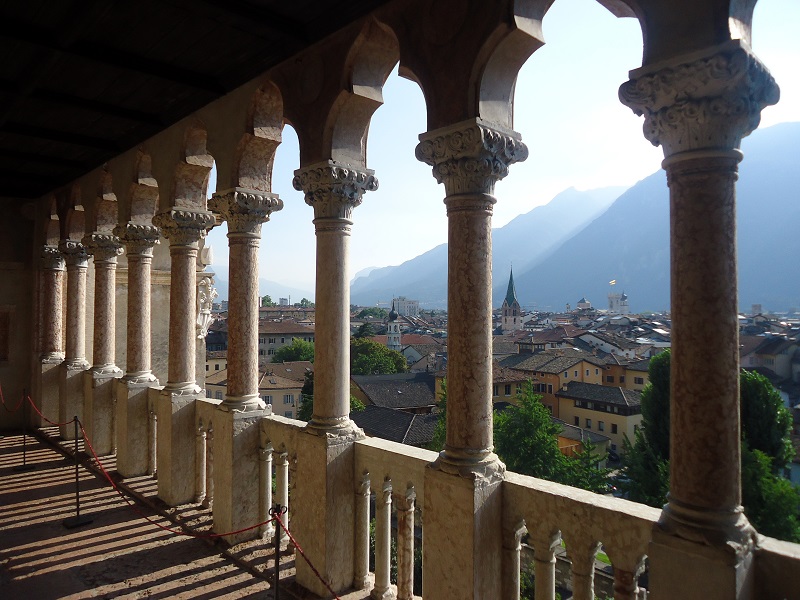Loggia
A loggia is an open-sided, roofed or vaulted gallery, often on the upper level of a building but sometimes at ground level. A loggia can be either free-standing or can run along the front or side of a building. The outer wall is open to the elements and is usually supported by a series of columns or arches, similar to an arcade.
The difference between a portico and a loggia is that a portico is intended to function as part of the entrance to a building, whereas a loggia is only accessible from inside a building and serves more as an additional space, often used for leisure purposes.
The difference between a veranda and a loggia is that a veranda is a roofed structure attached to the outside of the main building, whereas the a loggia forms part of the main architectural structure.
Arcades tend to be used as passageways or covered walkways rather than leisure areas.
Loggias are most commonly associated with Italian architecture, and date back to the early Middle Ages, when open-arched loggias were common in the main square of public buildings, helping in the performance of ceremonies. In the 17th century they became increasingly popular in the residences of rich nobility, where they were often used as ‘outside lounge areas’.
A variation is the ‘double loggia’, in which two consecutive floor levels contain loggias.
[edit] Find out more
[edit] Related articles on Designing Buildings Wiki
Featured articles and news
Latest Build UK Building Safety Regime explainer published
Key elements in one short, now updated document.
UKGBC launch the UK Climate Resilience Roadmap
First guidance of its kind on direct climate impacts for the built environment and how it can adapt.
CLC Health, Safety and Wellbeing Strategy 2025
Launched by the Minister for Industry to look at fatalities on site, improving mental health and other issues.
One of the most impressive Victorian architects. Book review.
Common Assessment Standard now with building safety
New CAS update now includes mandatory building safety questions.
RTPI leader to become new CIOB Chief Executive Officer
Dr Victoria Hills MRTPI, FICE to take over after Caroline Gumble’s departure.
Social and affordable housing, a long term plan for delivery
The “Delivering a Decade of Renewal for Social and Affordable Housing” strategy sets out future path.
A change to adoptive architecture
Effects of global weather warming on architectural detailing, material choice and human interaction.
The proposed publicly owned and backed subsidiary of Homes England, to facilitate new homes.
How big is the problem and what can we do to mitigate the effects?
Overheating guidance and tools for building designers
A number of cool guides to help with the heat.
The UK's Modern Industrial Strategy: A 10 year plan
Previous consultation criticism, current key elements and general support with some persisting reservations.
Building Safety Regulator reforms
New roles, new staff and a new fast track service pave the way for a single construction regulator.
Architectural Technologist CPDs and Communications
CIAT CPD… and how you can do it!
Cooling centres and cool spaces
Managing extreme heat in cities by directing the public to places for heat stress relief and water sources.
Winter gardens: A brief history and warm variations
Extending the season with glass in different forms and terms.
Restoring Great Yarmouth's Winter Gardens
Transforming one of the least sustainable constructions imaginable.
























Comments